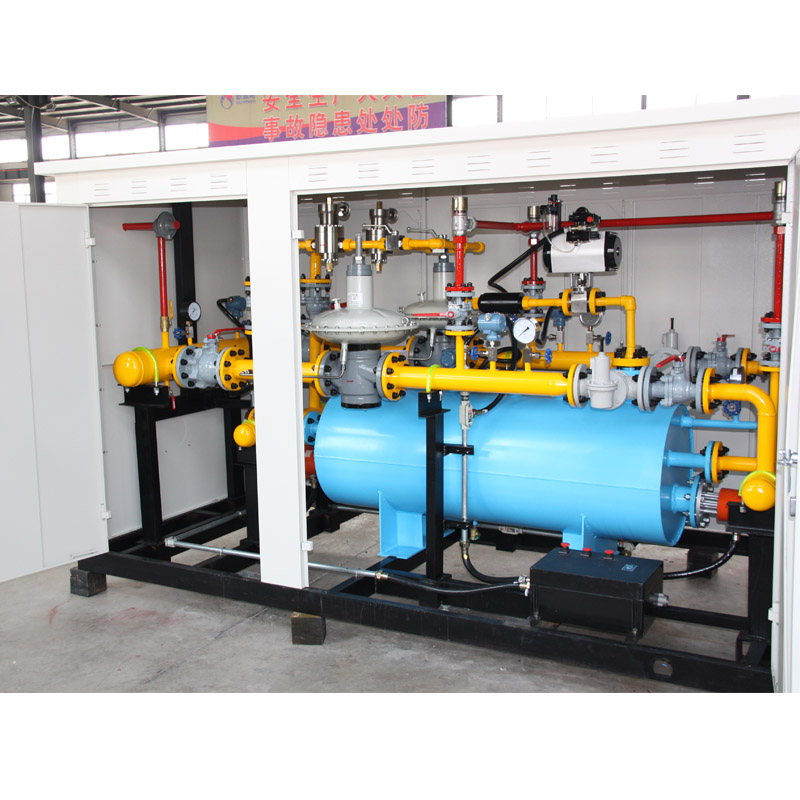
Dec . 28, 2024 19:25
Back to list
مخفض ضغط الغاز
Understanding Gas Pressure Regulators The Essential Component for Safe and Efficient Gas Delivery
Gas pressure regulators are critical devices used in various applications involving gas distribution and management. From residential heating systems to large industrial operations, these regulators play a vital role in ensuring the safe delivery of gas at the appropriate pressure. This article will explore the importance, functionality, types, and maintenance of gas pressure regulators.
Importance of Gas Pressure Regulators
Gas pressure regulators control the pressure of gas being delivered from a supply source to a system or appliance. Their primary function is to reduce the high pressure of gas from a supply line to a safe and usable level. This is especially crucial as appliances are designed to operate within specific pressure ranges. Without proper regulation, appliances could face risks ranging from inefficient performance to dangerous malfunctions, potentially leading to gas leaks, explosions, or other hazardous situations.
How Gas Pressure Regulators Work
At the heart of a gas pressure regulator is a mechanism that responds to changes in either upstream or downstream pressure. When gas enters the regulator, a diaphragm inside the regulator senses the inlet pressure and adjusts accordingly. If the inlet pressure is too high, the diaphragm moves to close off the gas flow, reducing the pressure downstream. Conversely, if the downstream pressure drops below the desired level, the diaphragm allows more gas to flow through.
Most regulators operate on a principle known as differential pressure. The regulator maintains the output pressure by balancing the force exerted by the diaphragm against a spring. This setup ensures a steady output pressure, even with fluctuations in gas supply pressure or changes in gas demand from connected appliances.
Types of Gas Pressure Regulators
Gas pressure regulators come in various types, catering to different requirements and applications. Here are some common types
1. Single-Stage Regulators These regulators provide a straightforward means of reducing pressure, offering a single step of pressure reduction. They are suitable for applications where the inlet pressure does not vary significantly.
2. Two-Stage Regulators As the name suggests, these regulators involve two stages of pressure reduction. The first stage reduces the high-pressure gas to an intermediate level, while the second stage lowers it to the desired operating pressure. This design allows for more stable output pressure, making them ideal for applications with fluctuating inlet pressure.
مخفض ضغط الغاز

3. Dual-Stage Regulators Similar to two-stage regulators, dual-stage regulators offer enhanced performance and reliability. They incorporate two independent pressure reduction mechanisms, ensuring consistent pressure regulation even if one stage fails.
4. Electronic Regulators These advanced regulators use electronic sensors and controls to manage gas pressure dynamically. They offer high precision and can be integrated with monitoring systems for real-time pressure management.
Maintenance of Gas Pressure Regulators
Regular maintenance of gas pressure regulators is essential to ensure their long-term functionality and safety. Here are some maintenance tips
- Regular Inspections Routine checks can help identify any wear or damage to the regulator. Look for signs of leakage, rust, or corrosion, which may indicate that the regulator needs replacement.
- Cleaning Keep the regulator free from dirt and debris. Contaminants can affect performance and lead to failure.
- Testing Regularly test the pressure output of the regulator to ensure it is functioning correctly. This can help catch any issues before they become serious problems.
- Professional Servicing Engage qualified technicians for comprehensive servicing and calibration. Professionals can identify potential issues that may not be visible to the untrained eye.
Conclusion
Gas pressure regulators are indispensable devices that ensure the safe and efficient delivery of gas across various applications. By understanding their operation, types, and maintenance needs, users can guarantee that their gas systems function safely and effectively. Regular attention to these devices can significantly enhance their longevity and reliability, ultimately contributing to safety and efficiency in gas usage.
Latest news
-
Safety Valve Spring-Loaded Design Overpressure ProtectionNewsJul.25,2025
-
Precision Voltage Regulator AC5 Accuracy Grade PerformanceNewsJul.25,2025
-
Natural Gas Pressure Regulating Skid Industrial Pipeline ApplicationsNewsJul.25,2025
-
Natural Gas Filter Stainless Steel Mesh Element DesignNewsJul.25,2025
-
Gas Pressure Regulator Valve Direct-Acting Spring-Loaded DesignNewsJul.25,2025
-
Decompression Equipment Multi-Stage Heat Exchange System DesignNewsJul.25,2025

